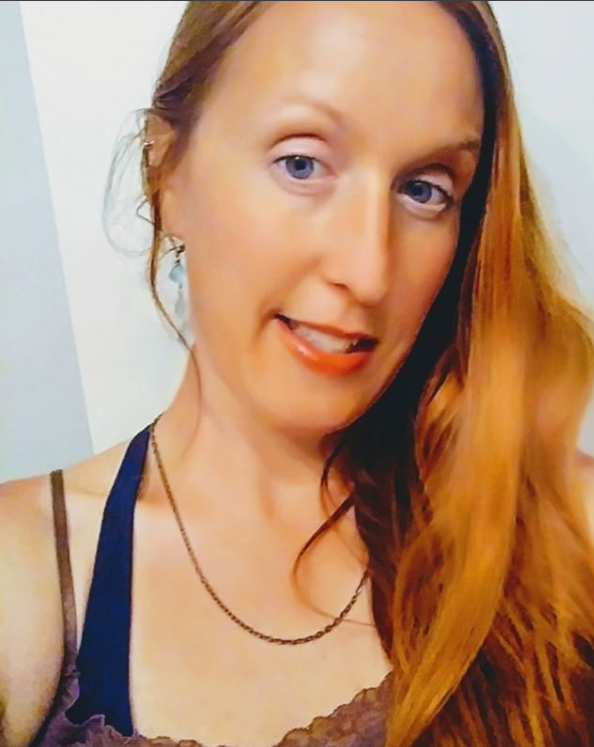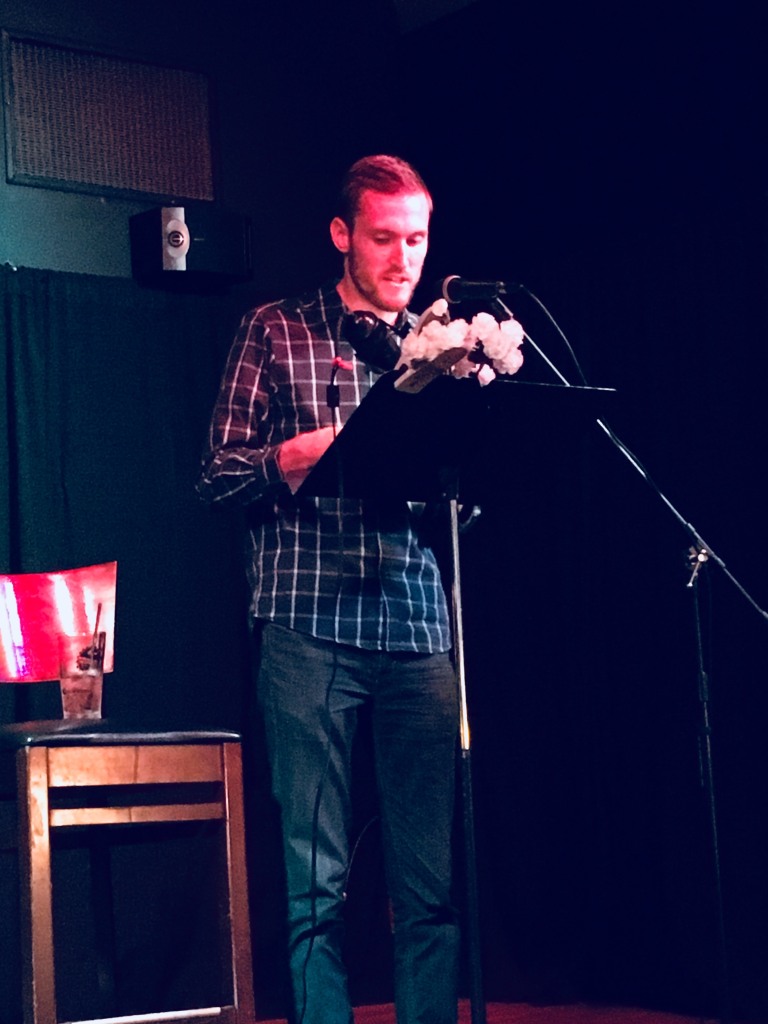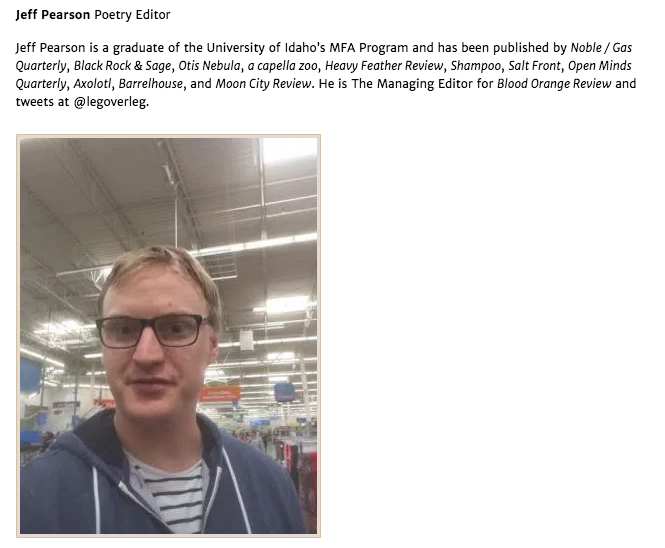Five by 5×5: Melissa Anne Peterson

Melissa Anne Peterson grew up in a rainy logging town in Washington State. She received a BA/BS degree in writing and biology from The Evergreen State College and an MS degree in Environmental Writing from the University of Montana. She has worked in endangered species recovery and pollution monitoring in Washington and Montana for 12 years. Her writing has been published by Camas Magazine, Flyway: Journal of Writing and Environment, Oregon Quarterly, and Seal Press. Her first novel, Vera Violet, was published by Counterpoint Press in February of this year.
Five by 5×5: Laura Stanfill

Laura Stanfill is the publisher behind the Portland based, indie tour-de-force, Forest Avenue Press. She was a 2018 resident at The Mineral School (Worthy aside, if you haven’t checked Mineral out, what are you even doing?) Her work has appeared or is forthcoming in The Rumpus, Passengers Journal, TAB: The Journal of Poetry & Poetics, Stonecoast Review, Longridge Review, The Nasiona, and the print anthologies Alone Together: Love, Grief, and Comfort in the Time of COVID-19 (Central Avenue), Ink (Hippocampus), and The Untold Gaze (O’Donnell/Little). Her zine Sad House: Parenting During a Crisis is forthcoming from Microcosm. She believes in indie bookstores and wishes on them like stars.
And now!! Laura takes five for 5×5, where we throw exactly five questions at slightly-unprepared literary kinfolk at lightening speed! Bam! Let’s see what happens!
1. How do you know when a piece is done?
LS: It slips off center stage in my brain.
2. Do your prolific writing periods coincide with your prolific reading periods?
LS: They’re opposite, but they propel each other. Kind of like a see-saw.
3. Have you ever judged a book by its cover?
LS: That’s my favorite way to browse at independent bookstores—letting covers call me. Midway through a book, my judgment shifts to whether the cover reflects the actual content.
4. Do you have any rituals set up for when you write?
LS: Lately I’ve been wearing a silver anklet dotted with tiny hearts and bells. It jingles when I shift positions at my desk. I can’t quite remember if my childhood friend Priya bought it for me or encouraged me to get it. Maybe she had a matching one. There’s something about not quite remembering the details that speaks to storytelling. In April, Priya lost her life to COVID-19 complications, so I can’t ask her.
5. What’s the name of the brick wall you’ve run your writerly head into most?
LS: I always make things more complicated than they need to be, especially when it comes to novels.
*
Check out Laura’s piece in the Rumpus here.
Five By 5×5: John Milas

We’re launching a new feature here at 5×5 and in this premiere post we want to highlight the work of our tireless, trusty fiction reader: Legit word-sorcerer, John Milas.
A bit about John:
John Milas grew up in Illinois. His first involvement with literary magazines occurred when he took advantage of an opportunity to read submissions for two Ninth Letter web issues as a college student at the University of Illinois. He moved on to grad school and read fiction and nonfiction submissions at Purdue University for Sycamore Review, eventually working with Roxane Gay as his thesis director. Before his engagement with the literary community, John served in the Marine Corps on active duty. He’s currently at work on two book projects inspired by his military experiences. He is grateful to read fiction submissions for 5×5 as well as the recently founded magazine Rejection Letters. Every year he looks forward to judging the fiction writing contest at University Laboratory High School in Urbana, Illinois which he has done since 2015. His work has appeared in The Southampton Review, Superstition Review, X-R-A-Y and elsewhere. Learn more at johnmilas.com.
AND NOW! John takes five for our new feature, Five By 5×5, where we throw exactly five questions at lightening speed to a smattering of literary community members…let’s see what happens….
1. Finish the sentence: At the end of the day, it’s a good story if
JM: …it cannot be re-written as an argumentative essay with a thesis statement and a conclusion paragraph.
2. How do you know when a piece is done?
JM: When I’m revising something, I like to read it back as a .pdf or hard copy if possible. I find that you catch more stuff that way, rather than if you just look at the file in a Word or Google doc. After that, I like to read it out loud to myself. Sometimes at an open mic event. At some point I also try to have two or three of my generous writer friends read the piece and give me their two cents. Maybe the piece isn’t done after all this, but I’m at least comfortable sending it out. I find this harder to describe regarding lit mag submissions. I think you hone your editorial intuition from spending time reading a lot of submissions and contemporary work in literary publications.
3. What was the last animal that inspired your writing?
JM: The dogs in this article.
4. Whose writing do you think is under appreciated?
JM: I admit I’m biased, but I would love to see more space provided for the work of enlisted military writers. The enlisted voice occupies the lower level of the military class strata; the working class. Commissioned officers would constitute the upper class. Prior enlisted writers include authors such as Kayla Williams, Matt Young, Anthony Swofford, Brooke King, M.L. Doyle and a number of others, like the canonized Tim O’Brien. The enlisted side of the military includes a diverse array of marginalized voices, in particular that of immigrants who may not be citizens of the United States. The literary community at large seems to be lacking in terms of seeking out this particular work and giving it a signal boost. I’ve found that people often see the military as a monolithic experience, and are typically unaware of the class divide between officers and enlisted, which is fairly considerable.
5. Have you ever judged a book by its cover?
JM: My Year of Rest and Relaxation has a great cover, so I positively judged the book by that standard and was not disappointed once I read it.
*
Check out John’s work in X-R-A-Y literary magazine here.
Issue #7
Issue #7 is now available! A resounding thanks to our contributors and readers for their patience once again. Enjoy!
Update on next issue!
Thank you for your patience as you await the next issue of 5×5, which will be released–as a double issue–in December, 2019, near the winter solstice.
5×5 Issue #6 Now Available!
5×5 Literary Magazine editors would like to thank readers and contributors for their patience in awaiting the launch of the most recent issue. Please enjoy!
5×5 Literary Magazine contributor Jack Bedell is Louisiana’s new poet laureate!!!
5×5 welcomes Grace Campbell to the team!!!
5×5 would like to take a moment to introduce Grace Campbell to our team. Grace was born, raised, and educated in New York. She currently lives and works in Olympia, Washington. Her work has appeared in The Santa Ana River Review, Wendigo, Black River Press, and elsewhere. Grace published her essay “wrapper/shoes” in the last issue of 5×5, and has since agreed to participate further by reading nonfiction submissions with S.J. Thanks for joining us, Grace! We’re so grateful to be working with you to create more issues of a magazine that seeks and celebrates writing that’s as strong and as clear as your own!

Introducing our new poetry editor, Jeff Pearson!!!
5×5 Literary Magazine editors are sad to say farewell to our former poetry editor and co-editor-in-chief extraordinaire, Jory Mickelson. However, we are thrilled to announce that Jeff Pearson is now on the team! Please take some time to read Jeff’s biography below and to join us in officially welcoming him to 5×5 Literary Magazine!

You must be logged in to post a comment.